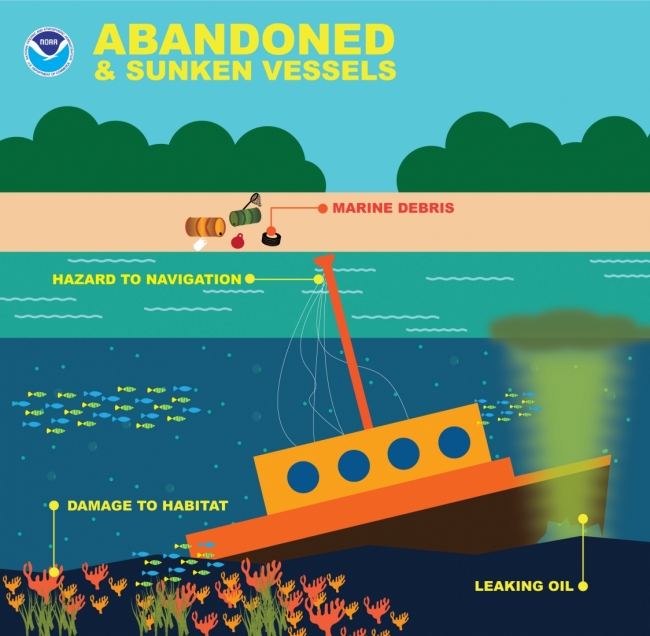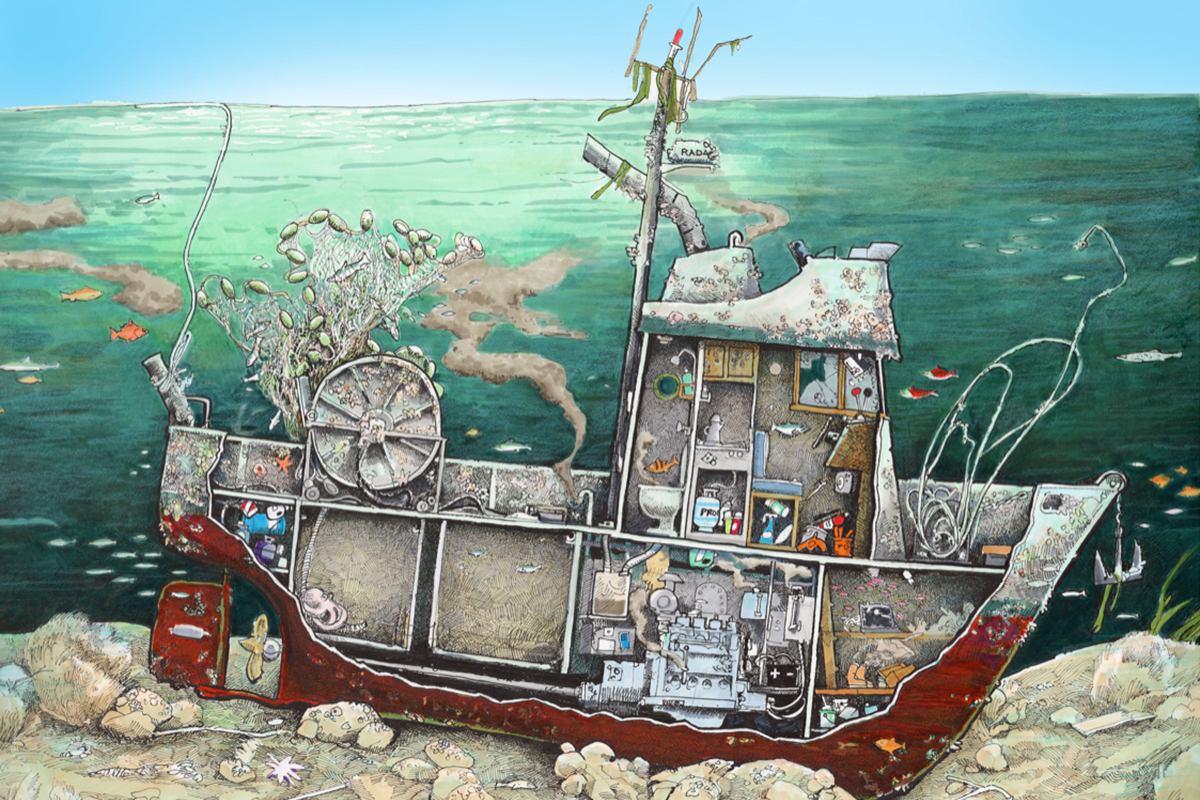This blog is part of a three-week long campaign celebrating the 30 year anniversary of the Oil Pollution Act of 1990. While oil spills and marine debris are hardly synonymous, when it comes to abandoned and derelict vessels, the two worlds often meet. In this blog, learn more about how OR&R's Marine Debris program helps keep our nation's coasts clean from threats of oil pollution.
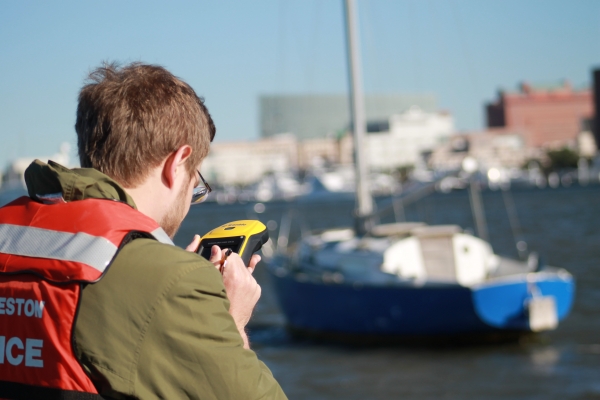
Abandoned and derelict vessels (ADVs) are vessels that are no longer taken care of and pose a threat to people and the environment. Though the legal definition of abandoned and derelict vessels varies, “derelict” often refers to vessels that are neglected with an identifiable owner, while “abandoned” vessels are those where the owner is unknown or has surrendered rights of ownership.
Vessels become abandoned and derelict for many reasons. Owners may neglect, or possibly abandon their boats when they can no longer afford to maintain them. Some boats may break loose from anchors or moorings and drift away, and some may be stolen. Severe weather events, like hurricanes or flooding, can also result in large numbers of vessels becoming abandoned and derelict, causing vessels to sink at moorings, be submerged in tidal areas, or become stranded on shorelines, reefs, or in marshes.
Abandoned and derelict vessels can cause problems for our ocean, waterways, and Great Lakes by blocking navigational channels, damaging ecosystems, and some vessels may contain fuel and hazardous materials, which could leak into the surrounding water. Apart from the overall debris hazards, many of these items can also be toxic. Each vessel carries materials such as batteries, fuel and other oils, and propane—and the larger the vessel, the more oil and chemicals it can carry.
Not all abandoned vessels are removed right away. Most wrecks, unless they pose an immediate pollution threat or impede navigation, are left alone and are largely forgotten until they begin to leak, often becoming the source of "mystery spills" that harm coastal economies and environments. On May 20, 2013, NOAA presented the U.S. Coast Guard a national report that finds 36 sunken vessels scattered across the U.S. seafloor could pose an oil pollution threat to the nation's coastal and marine resources. Knowing where these vessels are helps oil response planning efforts and may help in the investigation of reported mystery spills—sightings of oil where a source is not immediately known or suspected.
Removing abandoned and derelict vessels is often complicated and expensive, with some vessels located in hard-to-reach areas, requiring large, specialized equipment for recovery and transportation. Assessing, removing, and disposing of these vessels also requires significant financial and technical resources, and the laws around these vessels can be different across states, making them a difficult problem to address. The NOAA Marine Debris Program supports projects across the United States that remove and properly dispose of ADVs, which will help to ensure the protection of our natural resources.
In June 2016, the Oregon State Marine Board, in collaboration with the Oregon Department of State Lands and with the support of a NOAA Marine Debris Program Removal Grant, removed a sunken vessel near Coos Bay, Oregon. The F/V Western, was an 80-ton, wood-hulled fishing vessel that was built in 1934 and sank in January 2015 near the Empire Dock. The sunken vessel was near a busy shipping channel and in an environmentally-sensitive location. Now that it has been removed, the damage it caused to the sensitive environment can slowly recover and no longer be a navigational hazard to others on the water.
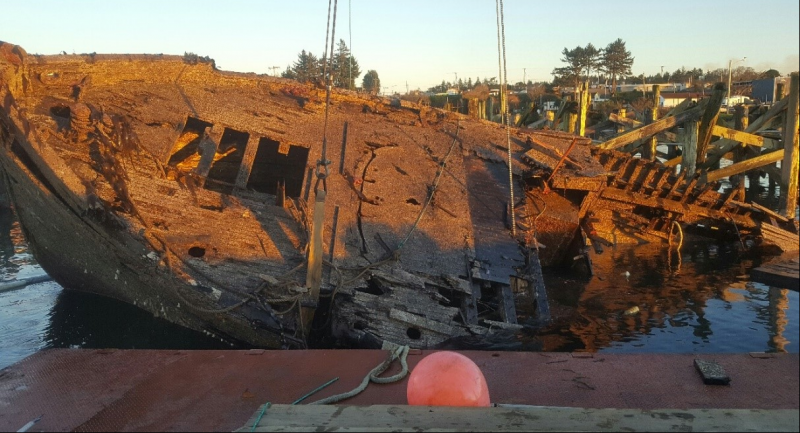
In 2013, Dauphin Island Sea Lab (DISL) led a restoration effort as part of the NOAA Restoration Center and with support of a NOAA Marine Debris Program Removal Grant, to remove abandoned and derelict vessels in Dog River, Alabama. The project removed 90 vessels in Dog River totalling 287,000 pounds and restored 0.34 acres of land by planting native seagrass. Restoration of this habitat provides hope that seagrass will return to the planted area as well as many finfish, shellfish, blue crab, endangered sturgeon, and various shrimp species.
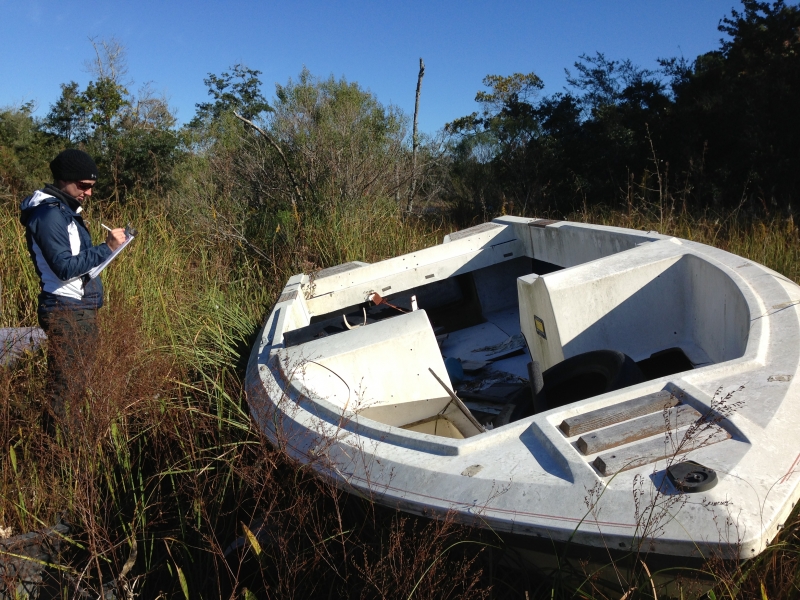
More recently, Pacific Coastal Research & Planning, in partnership with the Commonwealth Ports Authority, Department of Land and Natural Resources Division of Fish and Wildlife, Bureau of Environmental and Coastal Quality, and with the support of a NOAA Marine Debris Program Removal Grant, is coordinating the removal of a derelict fishing vessel from the lagoonal reef in Saipan, Commonwealth of the Northern Mariana Islands (CNMI). The F/V Lady Carolina, is an 83-foot, 54-ton, steel-hulled fishing vessel that broke free of its mooring during the devastating passing of category 4 Typhoon Soudelor in August 2015. Removing the grounded vessel, which is located in the northeast corner of Saipan’s ship channel, prevents further environmental impacts to sensitive habitat, such as coral reefs, and endangered species. Additionally, removal of the vessel is providing the local community with closure to one of the more visible remaining impacts of Typhoon Soudelor. To prevent other vessels from potentially becoming abandoned and derelict, the group is coordinating outreach events which will utilize the opportunity to highlight the importance of proper storm preparation, issues of derelict fishing gear, impacts to the marine environment, and preventive solutions to locally-based, large-scale marine debris.
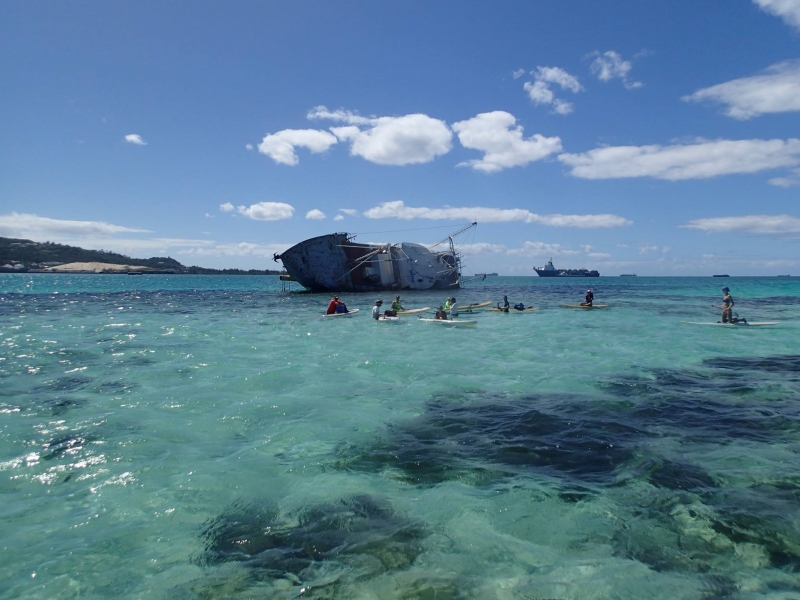
The NOAA Marine Debris Program works closely with partners to identify and remove abandoned and derelict vessels before they become a navigational hazard, leak pollution into the environment, or destroy sensitive habitat. However, we can’t do this alone and there are ways you can help. To learn more about abandoned and derelict vessels (ADVs) check out the ADV Fact Sheet for more information and the ADV Info Hub on to report an ADV.

